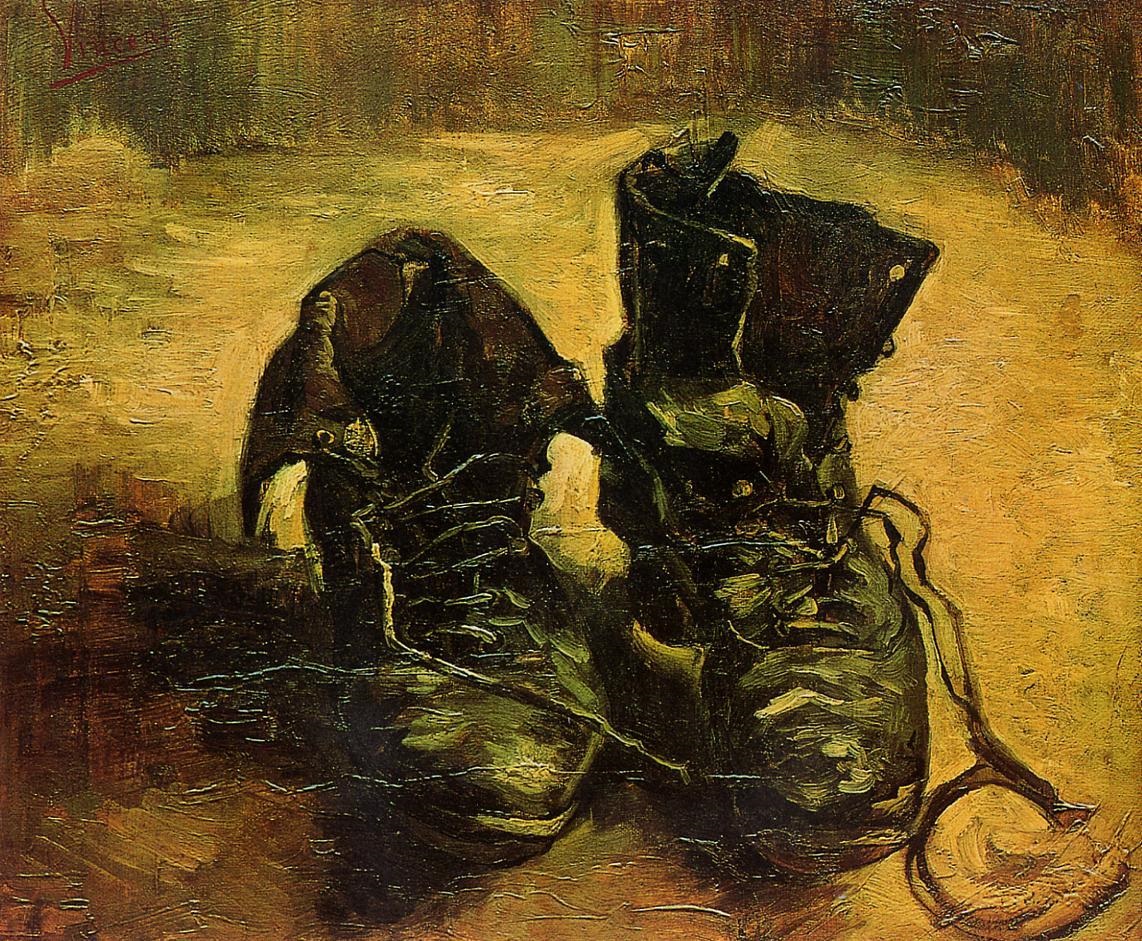Preacher, Painter, Miner, Contextualizer
By Anthony Casperson
10-1-16
In the very first blog post for Brushstrokes of a Theonerd, I wrote about how Vincent Van Gogh was my favorite artist. Though generations have marveled at the artistic genius of the master whom his contemporaries felt a failure, it’s not his art that makes him my favorite artist. It should come as no surprise to anyone that the reason why Van Gogh is my favorite artist is because of his story. (Story is kind of a big thing for me.)
When I was in bible college, during a preaching class, one fellow student preached a sermon that had Van Gogh as an illustration. The story told was how Van Gogh had dwelt among coal miners, working in the mine with them. And during lunch, he would preach the gospel of Jesus to his fellow miners. And these hardened miners who worked in terrible conditions were brought to tears by the message Van Gogh proclaimed. Like rivers cutting a channel through the coal-blackened faces, their tears fell.
I don’t really remember much else of the sermon, and I can’t even remember which of my classmates preached that sermon, but the image of this guy that I had previously only known as a painter has followed me ever since. And the question of how this painter came to preach the gospel rang around in my head.
Looking into his life, I learned that Van Gogh’s family tended to go into one of two fields, art and theology. For a time, Van Gogh tried learning theology, but it appears that he was one the type of people for whom formal education is difficult. He flunked out. But that didn’t stop him.
He went to a coal-mining town in Belgium as a missionary. There, he saw the clergy of the time living in far higher conditions than their church members. Van Gogh saw this as an error on the part of the clergy. He came to believe that it was better to live among those to whom he preached. To live in the same type of places that they did.
Moving into a small hut, sleeping on straw, Van Gogh found the people around him more likely to listen as he lived a life with them. He also found the ire of the church authorities because they felt that he was undermining the dignity of the priesthood. (Translation: Living like that was far beneath these church officials and they didn’t want to do it, so he shouldn’t either.)
It was here that Van Gogh’s story of preaching to miners happened. The miners were moved to tears because they saw standing before them a man who could have lived in far better conditions than he was. But it was out of a motivation to help them see the truth of the gospel that he dwelt in the filth with them.
They saw Jesus. They saw the incarnation by the life choice of this man before them. Jesus, as God could have stayed in heaven and never been enfleshed. The second Person of the Trinity could have chosen to have not been put through the agony of the cross. He could have said, “I’m not going into that sin-infested filth.” But he did anyway because he loved us.
Today, we call living in a similar standard as those we serve: contextualization. We stand in the same context as those we are trying to reach through love. Van Gogh wasn’t the first to minister in this way, and he gained the same ire from those with religious power, as many who try to live as contextualizers tend to do.
We are no better than any other person in need of the mercy of Jesus. All of us are sinners. We all fail. We all fall. Read up on the rest of Van Gogh’s life and you will see a man who would probably be diagnosed with a mental illness in today’s psychologically-minded society. But that is no different than the heroes of the bible that we see. Their sins and failures are recorded right along with their great achievements.
And yet God used them greatly, just as he can use us today. He can use us in our context to reach out to others in their context. Living above those we are showing the gospel will usually lead to deaf ears. But if we love them on their level perhaps they will Jesus through their tears.
By Anthony Casperson
10-1-16
In the very first blog post for Brushstrokes of a Theonerd, I wrote about how Vincent Van Gogh was my favorite artist. Though generations have marveled at the artistic genius of the master whom his contemporaries felt a failure, it’s not his art that makes him my favorite artist. It should come as no surprise to anyone that the reason why Van Gogh is my favorite artist is because of his story. (Story is kind of a big thing for me.)
When I was in bible college, during a preaching class, one fellow student preached a sermon that had Van Gogh as an illustration. The story told was how Van Gogh had dwelt among coal miners, working in the mine with them. And during lunch, he would preach the gospel of Jesus to his fellow miners. And these hardened miners who worked in terrible conditions were brought to tears by the message Van Gogh proclaimed. Like rivers cutting a channel through the coal-blackened faces, their tears fell.
I don’t really remember much else of the sermon, and I can’t even remember which of my classmates preached that sermon, but the image of this guy that I had previously only known as a painter has followed me ever since. And the question of how this painter came to preach the gospel rang around in my head.
Looking into his life, I learned that Van Gogh’s family tended to go into one of two fields, art and theology. For a time, Van Gogh tried learning theology, but it appears that he was one the type of people for whom formal education is difficult. He flunked out. But that didn’t stop him.
He went to a coal-mining town in Belgium as a missionary. There, he saw the clergy of the time living in far higher conditions than their church members. Van Gogh saw this as an error on the part of the clergy. He came to believe that it was better to live among those to whom he preached. To live in the same type of places that they did.
Moving into a small hut, sleeping on straw, Van Gogh found the people around him more likely to listen as he lived a life with them. He also found the ire of the church authorities because they felt that he was undermining the dignity of the priesthood. (Translation: Living like that was far beneath these church officials and they didn’t want to do it, so he shouldn’t either.)
It was here that Van Gogh’s story of preaching to miners happened. The miners were moved to tears because they saw standing before them a man who could have lived in far better conditions than he was. But it was out of a motivation to help them see the truth of the gospel that he dwelt in the filth with them.
They saw Jesus. They saw the incarnation by the life choice of this man before them. Jesus, as God could have stayed in heaven and never been enfleshed. The second Person of the Trinity could have chosen to have not been put through the agony of the cross. He could have said, “I’m not going into that sin-infested filth.” But he did anyway because he loved us.
Today, we call living in a similar standard as those we serve: contextualization. We stand in the same context as those we are trying to reach through love. Van Gogh wasn’t the first to minister in this way, and he gained the same ire from those with religious power, as many who try to live as contextualizers tend to do.
We are no better than any other person in need of the mercy of Jesus. All of us are sinners. We all fail. We all fall. Read up on the rest of Van Gogh’s life and you will see a man who would probably be diagnosed with a mental illness in today’s psychologically-minded society. But that is no different than the heroes of the bible that we see. Their sins and failures are recorded right along with their great achievements.
And yet God used them greatly, just as he can use us today. He can use us in our context to reach out to others in their context. Living above those we are showing the gospel will usually lead to deaf ears. But if we love them on their level perhaps they will Jesus through their tears.

Miners in the Snow by Van Gogh

Boots with Laces 1886
As it is written, "How beautiful are the feet of those who preach the good news!" (Romans 10:15)

